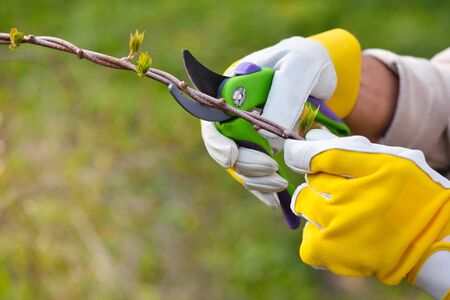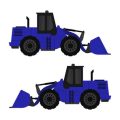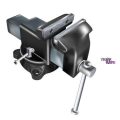Introduction to PPE in British Gardening
When it comes to gardening in the UK, personal protective equipment (PPE) is often overlooked, yet it plays a crucial role in ensuring safety and comfort while working outdoors. The British climate, with its frequent rainfall and changeable weather, can make garden surfaces slippery and tools more hazardous to handle. In addition, local regulations, such as those outlined by the Health and Safety Executive (HSE), stress the importance of appropriate protection when using various garden tools and equipment. Whether you are tending to a small urban plot or a sprawling country garden, selecting the right PPE helps prevent injuries from sharp tools, exposure to harmful substances, and even sunburn or insect bites. Understanding what to wear, and why, is an essential first step for every UK gardener aiming to enjoy their hobby safely and responsibly.
2. Essential Garden PPE Items
When it comes to garden safety, choosing the right Personal Protective Equipment (PPE) is just as crucial as knowing how to use your tools. Here’s a rundown of the fundamental PPE items every British gardener should consider, along with recommended brands and British Standard (BS) certified products for peace of mind.
Gloves: Protecting Your Hands
From thorny roses to rough timber, gloves are a must-have for preventing cuts, scrapes, and irritation. Look for gloves that are both durable and comfortable. Many gardeners in the UK favour Town & Country Master Gardener Gloves, which carry the BS EN 388 certification for mechanical risks.
Sturdy Boots: Footwear That Stands Up to the Task
Your feet need robust protection against spades, dropped tools, and slippery surfaces. Choose boots with steel toe caps and solid grip soles. Dickies Antrim Safety Boots are popular among British gardeners and comply with BS EN ISO 20345 standards.
Eye Protection: Shielding Against Debris
Eye injuries can occur unexpectedly when trimming hedges or strimming grass. Safety goggles or glasses rated to BS EN 166 offer vital protection. Brands such as Bolle Safety provide clear vision and sturdy build quality tailored for gardening tasks.
PPE Comparison Table
| PPE Item | Recommended Brand | British Standard Certification |
|---|---|---|
| Gloves | Town & Country Master Gardener | BS EN 388 |
| Boots | Dickies Antrim Safety Boots | BS EN ISO 20345 |
| Eye Protection | Bolle Safety Glasses | BS EN 166 |
The Importance of Certified Gear
Selecting PPE that meets British Standards ensures your safety equipment has been rigorously tested for reliability and durability. While there are many choices on the market, investing in recognised brands and certified products means you’re not only compliant with UK best practices but also giving yourself proper protection while working outdoors.
![]()
3. Seasonal PPE Considerations
Gardening in the UK means facing a wide variety of weather conditions, and your choice of personal protective equipment (PPE) should adapt accordingly. The British climate is famously unpredictable—one moment it’s drizzling, the next you’re basking in sunshine. Selecting seasonally appropriate PPE not only keeps you comfortable but also ensures you remain safe and effective while working outdoors.
Rainy and Wet Conditions
The most common challenge for gardeners across Britain is rain. Waterproof jackets and trousers are essential to keep you dry when tackling outdoor tasks during a downpour. Look for breathable, lightweight materials that allow ease of movement. Don’t forget waterproof gloves to protect your hands from becoming cold and sodden, which can lead to blisters or even minor injuries going unnoticed. Wellies or sturdy waterproof boots are indispensable for maintaining grip and preventing slips on muddy ground.
Summer Sun and UV Protection
When the sun does make an appearance, it’s vital to guard against its effects. A broad-brimmed sun hat shields your face, neck, and ears from direct sunlight, significantly reducing the risk of sunburn. Lightweight, long-sleeved shirts and trousers provide additional UV protection without overheating you. Sunglasses with UV filters protect your eyes from glare and harmful rays, while sunscreen should be regularly applied to exposed skin—even on overcast days, as UV can penetrate cloud cover.
Adapting Your PPE Throughout the Year
Spring and autumn often bring their own mix of chilly mornings and warmer afternoons. Layering is key; choose moisture-wicking base layers topped with fleece or soft-shell jackets that can be easily removed as temperatures rise. In winter, thermal gloves and insulated boots help maintain dexterity and warmth when handling metal tools or working with icy soil.
Practical Tips for Year-Round Protection
It’s wise to keep a dedicated set of seasonal PPE ready in your shed or utility room so you can respond quickly to changing weather. Regularly check all items for wear and tear—especially waterproofs, which can lose their effectiveness over time—and replace them as needed. By matching your protective gear to Britain’s ever-changing weather, you’ll stay safer and more comfortable every time you head out into the garden.
4. Specialised PPE for Powered Garden Tools
When it comes to powered garden tools—whether electric or petrol-driven—the risks increase significantly compared to manual equipment. These machines often generate higher noise levels, flying debris, and increased vibration, all of which call for more robust personal protective equipment (PPE). Below, you’ll find key recommendations for specialised PPE that is particularly relevant in the UK context, where weather conditions and local safety standards come into play.
Essential Additional Protective Gear
While basic PPE such as gloves and sturdy footwear are a must for all gardening activities, using powered tools requires extra precautions. Here’s a breakdown of recommended gear:
| PPE Item | Purpose | UK Context & Notes |
|---|---|---|
| Ear Defenders | Protects hearing from loud machinery noise | Compliance with UK Control of Noise at Work Regulations; essential for lawn mowers, strimmers, and hedge trimmers |
| Face Shield or Safety Goggles | Shields face and eyes from flying debris and dust | Crucial during hedge cutting or chainsaw use; opt for EN166-certified products for best protection |
| High-Visibility Jacket or Vest | Makes wearer easily seen in low light or near traffic | Especially important when working near roadsides or shared spaces; choose garments conforming to BS EN ISO 20471 standard |
| Cut-Resistant Trousers | Guards against accidental contact with blades or chainsaws | Recommended for professional tree work and hedge cutting; check if employer provides these under UK law |
| Anti-Vibration Gloves | Reduces hand-arm vibration syndrome risk (HAVS) | Vital when regularly using strimmers, brush cutters, or chainsaws; select gloves compliant with EN ISO 10819 standard |
| Steel-Toe Cap Boots with Non-Slip Soles | Protects feet from heavy objects and slipping hazards | A must in wet British gardens; boots should have adequate grip for muddy conditions typical in the UK climate |
PPE Usage Tips for Powered Tools in the Garden
- Check Fit and Certification: Always ensure your PPE fits properly and meets relevant British or European safety standards.
- Layer Up When Needed: In colder months, wear thermal layers beneath high-vis jackets without compromising visibility or movement.
- Inspect Regularly: Look out for cracks in face shields, worn-out ear defenders, or boots with poor tread—replace as necessary.
The Bottom Line on Powered Tool PPE in the UK Garden
Selecting the right specialist PPE not only keeps you safe but also complies with local health and safety requirements. Investing in quality gear suited to both your tasks and the unpredictable British weather ensures that every gardening session is productive—and injury-free.
5. Maintenance and Replacement of PPE
To ensure your personal protective equipment (PPE) remains effective when gardening, regular maintenance and timely replacement are essential. After each use, thoroughly inspect gloves, goggles, boots, and other gear for signs of wear such as holes, cracks, or thinning material. Clean PPE according to the manufacturer’s instructions; for example, washable gloves should be laundered and dried properly, while safety glasses can be gently wiped down with a soft cloth. Store all items in a dry, ventilated area away from direct sunlight to prevent deterioration.
When any item becomes damaged or no longer offers adequate protection, it is important to replace it promptly. For instance, if your steel-toe boots develop splits or the tread wears thin, they may no longer protect against sharp tools or slipping hazards. Similarly, cracked visors or torn gloves must not be used.
Disposing of worn-out PPE requires consideration of local waste management guidelines. In the UK, many councils offer recycling schemes for textiles and hard plastics. Check your local authority’s website to see if they accept old gloves, boots, or helmets as part of their recycling collections. Otherwise, use designated household waste bins. Never burn or illegally dump PPE as this can harm the environment.
By caring for your PPE and disposing of it responsibly when necessary, you ensure ongoing safety in the garden and contribute positively to your community’s environmental efforts.
6. Cultural and Legal Aspects of PPE in the UK
When considering what to wear while gardening, it is important to recognise both British cultural attitudes towards safety and the legal framework governing Personal Protective Equipment (PPE). Traditionally, there has been a pragmatic approach to gardening safety in the UK; many view their gardens as extensions of their homes, places where comfort sometimes takes precedence over strict adherence to safety protocols. However, this relaxed attitude is gradually shifting as awareness increases about potential hazards associated with garden tools and equipment.
British Attitudes to Garden Safety
While some may still see donning full PPE as unnecessary for simple tasks, there is a growing appreciation—fostered by safety campaigns and public health information—that even routine jobs can present risks. The culture is moving towards normalising gloves, sturdy footwear, eye protection, and ear defenders as standard kit for gardening enthusiasts. It’s not unusual now to spot neighbours wearing protective gear during weekend tidy-ups or when tackling DIY projects outdoors.
Legal Regulations and Responsibilities
From a legal perspective, the Health and Safety Executive (HSE) provides clear guidance on PPE requirements, particularly for professionals or those using powered equipment. While domestic gardeners are not bound by workplace regulations, manufacturers’ instructions often specify recommended PPE for safe tool operation. For those who employ help in the garden—such as professional gardeners or landscapers—there are stricter obligations under UK law to provide appropriate PPE and ensure its correct use.
Where to Seek Advice and Further Information
If you’re unsure about what protective equipment is suitable for your gardening activities, reputable sources include the HSE website, local council advice services, garden centres, or specialist retailers who can offer tailored recommendations. Many community organisations and gardening clubs also run workshops or share best practices regarding PPE use. Staying informed through these channels helps embed a culture of safety within Britain’s vibrant gardening community.
Embracing Good Practice
Ultimately, adopting proper PPE is not just about complying with regulations but embracing a sensible approach to personal well-being—a value that resonates strongly within British culture. By staying aware of both cultural norms and legal expectations, gardeners across the UK can continue enjoying their outdoor spaces safely and responsibly.


